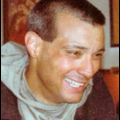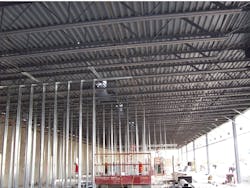Basic Survival Skills and the Probationary Firefighter
The goal of this four-part series is to be able to answer three questions:
- As it relates to my survival on the fireground, where do I begin?”
- 2. “What basic tools and equipment will enhance my survival?”
- “What skills do I need to know?”
Soon, the newest members of our service will be turned loose from the relative safety of the training academy to their new assignments. Once assigned to a company, there are no more “built-in safeties.” There is no place for errors to be corrected by an instructor and one wrong move may very well be the new member’s last. There’s a very real need for every firefighter, from the newest member to the most senior member to be fully competent in the basics of firefighter survival.
This series of articles addresses the very basics from three different aspects:
- Knowledge and personal fitness
- Tools and equipment
- Skills and techniques
These are three interrelated components to fireground survival. Each of our firefighters must be prepared for the potential hazards that await them. A great resource put out by the United States Fire Administration (USFA) as part of their technical report series is entitled “Rapid Intervention Teams and How to Avoid Needing Them.” Within this report are many great ideas that can form the foundation of a firefighter survival-training program.
Each of our training programs differs in some respect compared to the programs of other departments. Some training programs are very thorough and may last 6 months or more, while others may be very short because of budgetary constraints or staffing or time issues. Nevertheless, basic survival skills must be covered. Good, quality training takes place at our fire academies, but due to the limitations described, it is incumbent on our departments and their company officers to continue with a firefighter’s training every shift and every opportunity. Where the fire academy leaves off, a seamless transition of constant learning must occur when the probationary firefighter goes to their company.
Knowledge and Personal Fitness
The fire service is a highly technical profession. A true professional in our service will constantly be improving, learning, and applying new skills at every opportunity. Personal knowledge forms the core of firefighter safety and survival. In addition, there is the critical importance of excellent medical, physical, and mental fitness, proper diet, and adequate rest. Many of our casualties, for example, are attributed to heart attacks. Furthermore, the other mental and physical stresses that are associated with this job all take their toll on the well being of our members. Injuries and deaths (not only on the fireground, but also off duty) can be prevented through a regimented fitness and diet program.
These health-related issues should be an integral part of your own department’s program for enhancing personal well being and improving firefighter survival from that aspect. This topic alone is far too in-depth to cover in detail here. To the probationary firefighter, seek out from your own department just what they have to offer as it relates to these issues.
After leaving the fire academy, the learning is just beginning! Now is not the time to put down the books and relax. Our three- to six-month veterans just don’t have the time to waste; too much is at stake. In addition to a solid department training schedule, each new firefighter must begin to absorb the lessons that have caused so many of our counterparts to never return home. There are many resources available. Take for example the National Institute for Occupational Safety and Health (NIOSH) and its Firefighter Fatality Investigation and Prevention Program.
This site, as well as a host of other sites dedicated to preventing firefighter injuries and deaths, has so much information to share. Remember that those who do not learn from history are doomed to repeat it!
As a new member in your organization, set aside time to read these reports. If you read, say, one a week, you will begin to see patterns developing. These actual real-life incidents cost the lives of good people; people who never returned home to their families. Thus, there’s a strong incentive to learn everything you can, from every source you can access.
To enhance your background, take a look at the National Fire Protection Association’s (NFPA) website and download their latest Fatality and Injury reports. You will be able to see how your counterparts are being injured and killed. These are more than just numbers. The findings are due to horrific incidents that have stricken people just like you. The Fatality and Injury reports can be found immediately below and the third link is entitled “Pattern of Firefighter Fireground Injuries.”
By reading the NIOSH after-action reports, the NFPA injury and fatality reports, and the flood of textbooks, magazines, and website articles that are available, we can see how to prevent these same experiences from happening to us. In addition, learn the technical aspects associated with the tools and equipment you use every day. Know the limitations, advantages, and disadvantages of your own personal equipment from your issued personal protective equipment (PPE) to your self -contained breathing apparatus (SCBA) to the tools and equipment you rely on to complete your fireground tasks. Know the safe operating parameters of each item … your life depends on it!
Many of the injuries and deaths discussed in these reports are also attributed to extreme forms of fire behavior, such as flashover and backdraft, as well as building collapse. Because of today’s hazards, we are faced with enormous rates of heat release due to the synthetic furnishings and combustible interior finishes in the homes and businesses of our communities. In this climate of cost efficiency, many of the occupancies built within the past 20 years or more, as well as those going up all around us, are of lightweight construction. Such lack of mass can result in early failure; especially where heavy loads are imposed on these structural components and where sprinkler protection is absent.
Each of our firefighters must therefore make a conscious effort to learn from self-study and from in-service training everything they can about building construction and the behavior of fire. These are critical topics that must be mastered in the course of a fire service career. So many firefighters and fire officers have been killed and maimed because of buildings falling on them and so many have been horribly disfigured from burn injuries. We must make a concerted effort to prevent this.
Here are three great ways to learn about building construction and fire behavior:
- Self-study, college courses, and asking questions to the vast resources that are around you in the firehouse, most notably highly competent, well-read, and experienced firefighters and fire officers.
- In-service inspection and building familiarization conducted as part of the company-training program (see Figure 1).
- Critiques of fires. Valuable learning tidbits can be picked up after a fire has been extinguished. In a safe and systematic fashion, the probationary firefighter can learn a lot about building construction, especially after the building has been degraded and many of the structural components are exposed (see Figures 2 and 3). Under the watchful eye of their officer, the newest members’ knowledge can be enhanced dramatically.
Experience is a great teacher, but is also a very costly one! Learn from the many other sources as well and use these principles to guide you at your next building fire or emergency response. Firefighter safety and survival are more than just buzzwords or catch phrases. This is a very big topic to learn and one of the most important.
To make matters worse, your safety can be compromised in many more ways then just operating at fires. Such a case is the routine motor-vehicle accident with injuries; the threat of blood borne pathogens and other diseases is a very real threat to today’s first responders. In addition, you are responding to populations that may also be ill and could sicken you, and in turn, your families. The Center for Disease Control and Prevention also has a wealth of information that first responders can use to protect themselves.
Summary
The need for an ever-expanding knowledge base coupled with ever-improving physical and mental fitness forms the core to your survival. Knowledge is power and it translates into your safety, so get started now. Start reading everything you can and start asking questions to those around you. This is a key part of your survival!
The next article in this series will explore tools and equipment that every fighter should have as part of their personal gear. In the meantime, take a look at the links below, download some of those reports and see if anything looks familiar, and by all means, get off the couch and get into your response area and look around!
ARMAND F. GUZZI JR. has been a member of the fire service since 1987. He is a career fire lieutenant with the City of Long Branch, NJ, Fire Department and is the deputy director of the Monmouth County, NJ, Fire Academy where he has taught for over 20 years. He has a masters degree in management and undergraduate degrees in fire science, education, and business administration. View all of Armand's articles here. He can be reached via e-mail at [email protected] or [email protected].
About the Author

Armand Guzzi
Firehouse.com Contributor
Armand F. Guzzi, Jr. has been a member of the fire service since 1987. He recently retired a career fire lieutenant with the City of Long Branch, NJ, Fire Department and is the deputy director of the Monmouth County, NJ, Fire Academy where he has taught for over 20 years. He has a Master's degree in management and undergraduate degrees in fire science, education, and business administration. View all of Armand's articles here. He can be reached via e-mail at [email protected] or [email protected].
